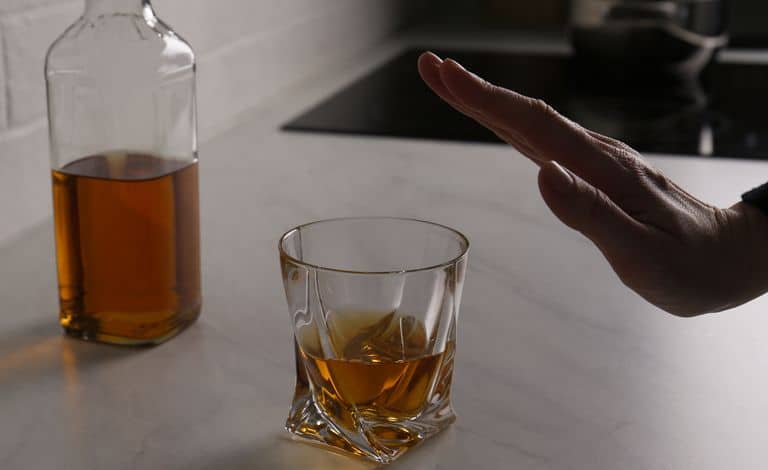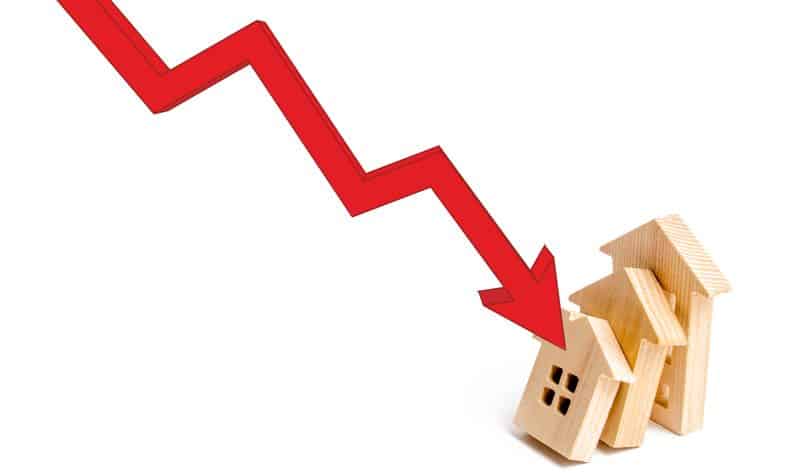
Understanding dependency
A basic premise in the treatment of substance dependency called substance use disorder (SUD), that is chemical dependency, alcoholism and drug dependency, is that an addict in recovery cannot learn to consume alcohol or drugs in a controlled way. There is ample scientific evidence and stories people tell to this effect. Ongoing recovery and relapse prevention work over an long period of time is the necessary prerequisite for long-term sobriety. Psychologists state that when it comes to relapse prevention, patients should avail themselves of all possible tools. Psychologist, psychotherapists, and counsellors with chemical dependency training can provide evidence-based relapse-prevention-education to reach long term recovery. Based on years of research and scientific discovery, it is evident that relapse prevention is an important aspect to maintain sobriety and avoiding and preventing future abuse.
Additionally, research results also show that self-help (AA based 12-step) groups during treatment are helpful. They are a long-term support system are vital for someone’s recovery. Furthermore, psychologists show that it is good when the family system can receive counselling. The disease of alcoholism and drug dependency affects each person in the family. Self-help groups are available for the families of addicts as well, such as Al-Anon, or Alateen.
Experienced counsellors with addiction training draw from several schools of thought during drug and alcohol treatment. Avoiding and preventing relapse is the essential ingredient in sustained recovery.
Relapse Prevention (RP)

Since relapse is a process, there are events we can see that precede the relapse and continue into the relapse episode. Marlatt and Gordon in 1985 developed a relapse prevention (RP) model. It is based on social learning theory and cognitive-behavioral psychotherapy.
The basic idea of RP is that people are able to acquire new skills and behaviours. What they need to do is change the way they think about situations. “The goals of RP are to see a relapse coming and to prevent it and to assist recovery from a slip before it becomes a relapse.
Recovery occurs over time as the person increases his or her sense of self-efficacy and self-esteem from prolonged abstinence (Gordon, 2003, p. 8). They consider lapses and relapses are not personal failures, but as temporary setbacks. From such a setback, an individual can learn and thus the lapse or relapse can serve as a prolapse. “Prolapses are defined as mistakes that clients learn from that improve their eventual chances of success (Marlatt, Parks & Witkiewitz, 2002, p.9).
According to this model, individuals are not held responsible for negative habits from the past. It does put responsibility on the patient to change his or her addictive behaviours to functional behavioral coping skills and to use cognitive restructuring which will replace negative thoughts with positive good thoughts. Generally, a patient will pass through 3 stages which are:
1. Commitment and motivation to prepare for the change
2. Active implementation of the change
3. Maintenance of the change (Gordon, 2003)
Relapse triggers

RP focuses on events of factors that can bring about a relapse episode. Here factors and situations are classified that can trigger or add to the relapse episodes. According to this model there are two categories of such factors: immediate determinants and covert antecedents.
Immediate determinants or relapse include
Intrapersonal high risk situations: These are negative emotional states, such as anger, anxiety, depression, frustration, and boredom as a result of how a person sees a situation.
Interpersonal high risk situations: These are negative emotions because of conflict with another person or group can trigger a relapse. Psychologists showed that negative emotional states within people and between people formed the basis for more than 50% of all relapse episodes studied.
Social pressure: Direct verbal or nonverbal pressure to consume, or indirect pressure such as being around individuals who consume were responsible for more than 20% of relapse episodes.
Positive emotional states: These are things like celebrations, seeing alcohol related ads on TV, or passing one’s favorite bar, or the idea to one’s willpower.
According to RP, another aspect of the danger of a lapse or relapse is added depending on how an individual has learned to cope with high risk situations. RP also looks at what expectations the patient has about the effects of using again, and how they see a lapse. If a person has behavioral and cognitive coping skills, he is more likely to get out of a risky situation and not lapse/relapse. Additionally, the expectation of the effect of drugs is important: If a person sees the alcohol or drug as an aid in coping with a risky situation without considering long-term negative consequences a lapse might occur.
Lastly, a lapse does not have to progress into a full relapse. Marlatt and Gordon in their research found that the abstinence violation effect is an important issue. The abstinence violation effect is how a person thinks about his relapse. When a patient sees a lapse as a failure and has guilt, it is very likely that the relapse progression will be set in motion.
Covert antecedents of relapse include
Life-style factors: Here the degree of balance between what persons “should” do and what persons “want” to do is important. Too many life demands with too little joy tips the balance towards relapse and negative emotional states. Negative emotional states are part of relapse, and a person using drugs or alcohol might see using as the only way to obtain pleasure. Psychologists noted that life-style imbalance are strongly related to a person’s risk of relapse.
Cognitive factors: Rationalization, denial, and a desire for immediate gratification. This faulty thinking can increase the risk of relapse, because it can increase exposure to high risk situations and decrease motivation to resist substance use. An example for such thinking is when someone thinks that he or she can drop by their favourite bar to say hi to a friend and not sit down for a drink.
Apparently irrelevant decisions (AID): Seemingly inconsequential decisions set a person up for a lapse/relapse. Here the recovering dependent person makes decisions that the surface do not seem to add to a relapse risk. Denial keeps the person at risk from seeing the risk and rationalization provides a reason for making the decision. An example could be to have a bottle of wine on hand for cooking thereby creating a temptation at a later point.
Urges and cravings: The RP model proposes that urges and cravings are due to psychological or environmental stimuli. According to Marlatt and Gordon the recovering patient’s urge is defined as a relatively sudden impulse to consume the substance of choice. Craving is the subjective desire to have the effects or consequences of using (Larimer et al., 1999).
Practicing Relapse Prevention

This RP model proposes to use cognitive and behavioral approaches that target each step of the relapse process. Counsellors encourage specific intervention strategies that address the immediate determinants of relapse and global self-management strategies. This addresses the covert antecedents of relapse. These strategies fall into the categories of skills training, cognitive restructuring, and lifestyle balancing. To sum up, specific intervention strategies include identifying and coping with risky situations.
Warning signs of relapse
Psychologists educate the patient during counselling, and the patient learns to identify the warning signs of entering or being in a risky situation. Psychologist assesses and enhances the patient’s ability and motivation to cope in such a situation. Additionally, self-efficacy-enhancement procedures help a patient improve his sense of mastery and of being able to cope with difficult situations without relapsing. The patient will benefit from a client-psychotherapist relationship that is collaborative rather than “top down.” Psychologists make patients aware that RP is an acquisition of skills and not a test of willpower. Patients are made aware during counselling to set small, doable tasks to increase a sense of self-efficacy. Lastly, psychologists, psychotherapists and counsellors can focus on general accomplishments to increase a patient’s sense of mastery, in general, to achieve a carry-over effect into drug and alcohol related efficacy (Larimer et al., 1999).
Relapse prevention includes speaking about a patient’s subjective expectation of the effect of alcohol. Often positive expectations of the outcome of drinking are based on myths or placebo effects. Counsellors can assist patients in bringing thought into the experience and look at short and long-term consequences (Larimer et al., 1999).
Lapse management

free from the shackles of addiction
The relapse prevention model also includes lapse management. The idea is to halt the progression into a relapse and to help clients cognitively restructure the event. This helps them see that they have not suffered a failure of willpower or morality but failed to address a risky situation. Psychologists might want to facilitate a lapse-management-plan. This could include a limit of how much of the substance can be taken, reasons why it is important to put a halt to using, to leave the high risk situation, and to contact the counsellor or a supportive person as soon as possible (Larimer et al., 1999).
Life-Style change

Psychologists also bring focus to global lifestyle and self-control strategies. These strategies include helping patients balance their lifestyles, so that recovering individuals achieve a balance between stress and the fun of life. During counselling psychologists encourage their patients to tap into enjoyable activities which they pursued before they became substance dependent. Furthermore, specific cognitive-behavioral skills such as relaxation training, stress-management, and time management can improve a client’s life-style balance. Counselling also fosters positive dependencies, such as meditation or exercise, and can have long-term positive effects on mood, health, and coping ability (Larimer et al., 1999).
Stimulus control

Psychologists also tell patients to practice stimulus control techniques to lessen urges and cravings for relapse prevention. Here they take all items connected to their use from their living from their environment. This would include alcohol, shot glasses, or any other drug or drug related things. Recovering individuals can change the things they connected with their dependency. Patient’s can listen to different music, for example, or change the furniture to reduce cues to using. Lastly psychologists, psychotherapists, and counsellors impart ways to decline events and places that were connected with use (Larimer et al., 1999).
Psychologists teach patients to expect and accept cravings and urges of their dependency as normal, but not to see this as a desire to drink and to see it as a conditioned response to cues in the environment. It is important that patients learn that they can ride this feeling out, as it will come, swell, and go like a wave in the ocean (Larimer et al., 1999).
Relapse prevention road map
Counselling is crucial in relapse recovery showing patients how they will benefit from having a relapse road map. Here patients can apply cognitive-behavioral analysis to a situation. They will see available choices to cope with or avoid these situations and their consequences. This approach also assists in finding AIDs, so that people can make choices and decisions from which they benefit (Larimer et al., 1999).
Relapse treatment

Psychologists studied this relapse prevention model and found data show the effectiveness of treatment strategies. Psychologists have applied this RP model to various addictive behaviours. They found it was most successful with alcoholism. There is an idea that in the future modifications be made to this RP model showing changes about the assessment of risky situations and the conceptualization of covert and immediate antecedent of relapse. Significant research shows the effectiveness of RP for alcoholism and to a lesser degree nicotine or other chemical dependency. Psychologists also noted that people’s self-efficacy might not necessarily rise if they handle a high-risk situation well. Lastly, research findings show that RP plus medication treatment appears to have an enhanced effect on abstention rates (Gordon, 2003).
A review of relapse prevention therapy (RPT) and information on how to work with clients can be found in the Clinical Guidelines for Implementing Relapse Prevention Therapy by Marlatt, Parks, and Witkiewitz. It is a source of information that shows how to work with dependency. These downloadable guidelines also contain information on various assessment tools and other valuable resources (Marlatt et al., 2002).
Relapse, always a lesson
To sum up insights on relapse prevention: Some individuals think their lapse is due to internal factors such as lacking willpower. Dependent persons who have relapsed might come to believe they will never be able to stay sober. However, when a dependent person experiences a lapse, and comes to understand it as not being able to cope with a risky situation, they can learn from their mistake. This helps them avoid such situations in the future (Larimer et al., 1999) and continue their recovery.
Sources
Counselor’s manual for relapse prevention with chemically dependent criminal offenders Technical Assistance Publication (TAP) Series 19 / Chapter 3-Relapse (n.d.). U.S. Department of Health and Human Services: SAMHSA, Office of Applied Studies. Retrieved July 03, 2011, from http://www.kap.samhsa.gov/products/manuals/taps/19b.htm
Extended abstinence is predictive of sustained recovery. National Institute on Drug Abuse (NIDA). Retrieved Jul 03, 2011, from http://www.drugabuse.gov/pubs/teaching/Teaching6/Teaching8.html
Gordon, S. (2003). Relapse & recovery: Behavioral strategies for change. Retrieved Jul 02, 2011, from http://www.apofla.com/dl/relapse/2516_relapse_report.pdf
Gorkski & Miller (1986). Staying sober: A guide for relapse prevention. Independence, MO: Herald House/Independence Press
Marlatt, A, Parks, G. & Witkiewitz (2002). Clinical guidelines for implementing relapse prevention therapy. Behavioral Health Recovery Management. Retrieved Jul 07
McKay & Hiller-Sturmhoefel (2011). Treating alcoholism as a chronic disease: Approaches to long-term continuing care. . National Institute on Alcohol Abuse and Alcoholism (NIAAA), 33(4). Retrieved Jul 25, 2011, from http://pubs.niaaa.nih.gov/publications/arh334/356-370.pdf
McLellan, T. (2003). Forward: Relapse – Removing the taboos on the topic and for honest efforts to address it. Retrieved Jul 01, 2011, from http://www.apofla.com/dl/relapse/2516_relapse_report.pdf
National Survey of Substance Abuse Treatment Services: The N-SSATS Report (2010, October 14). Clinical or therapeutic approaches used by substance abuse treatment facilities. U.S. Department of Health and Human Services: SAMHSA, Office of Applied Studies. Retrieved July 02, 2011
Relapse rates for drug addiction are similar to those of other well-characterized chronic illnesses (n.d.). National Institute on Drug Abuse (NIDA). Retrieved Jul 03, 2011, from http://www.nida.nih.gov/pubs/teaching/Teaching6/Teaching8.html
(2005). U.S. Department of Health and Human Services: SAMHSA, Office of Applied Studies. Retrieved Jul 02, 2011, from http://www.kap.samhsa.gov/products/manuals/pdfs/substanceabuserelapse.pdf
Tiffany, S. (1999). Cognitive concepts of craving. National Institute on Alcohol Abuse and Alcoholism (NIAAA),23(3). Retrieved Jul 10, 2011, from http://pubs.niaaa.nih.gov/publications/arh23-3/215-224.pdf
Walitzer, K. & Dearing, R. (2006). Gender difference in alcohol and substance use relapse. Clinical Psychology Review, 26, 128-148. Retrieved Jul 06, 2011, from http://www.genderbias.net/docs/resources/guideline/Gender%20differences.pdf
